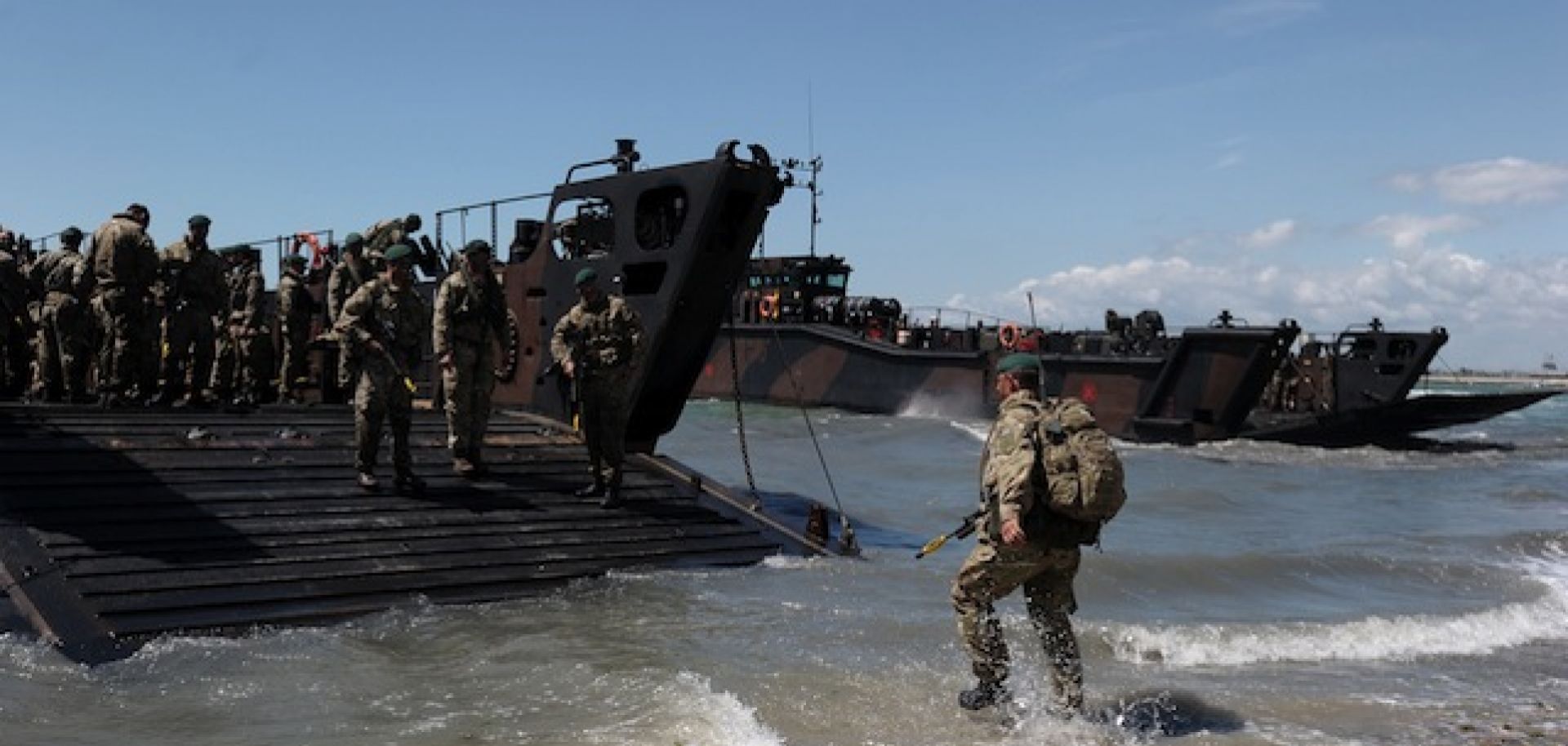ASSESSMENTS
Since D-Day, Amphibious Operations Have Become More Complex
Jun 6, 2014 | 09:08 GMT

British Royal Marines demonstrate a beach landing during D-Day commemorations in Portsmouth on June 5, 2014. Seventy years after the largest seaborne invasion in history, technology has changed the way that invaders would conduct amphibious operations.
(CARL COURT/AFP/Getty Images)
Summary
On June 6, 1944, Allied forces from the United States, United Kingdom and Canada launched the largest seaborne invasion in history by landing nearly 160,000 troops on the beaches of Normandy in a single day. This opened the long-awaited second front in the war against Nazi Germany and started the chain of events that ended in the fall of Berlin in May 1945. D-Day was the longest day in that assault and a pivotal moment of the war.
In the intervening period, amphibious assaults have been exceedingly rare. Were one to be carried out today, revolutionary shifts in technology and strategy would make a contemporary amphibious operation radically different.
Subscribe Now
SubscribeAlready have an account?
